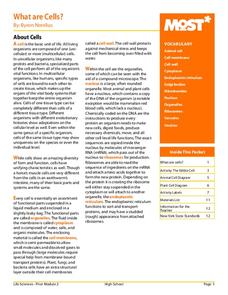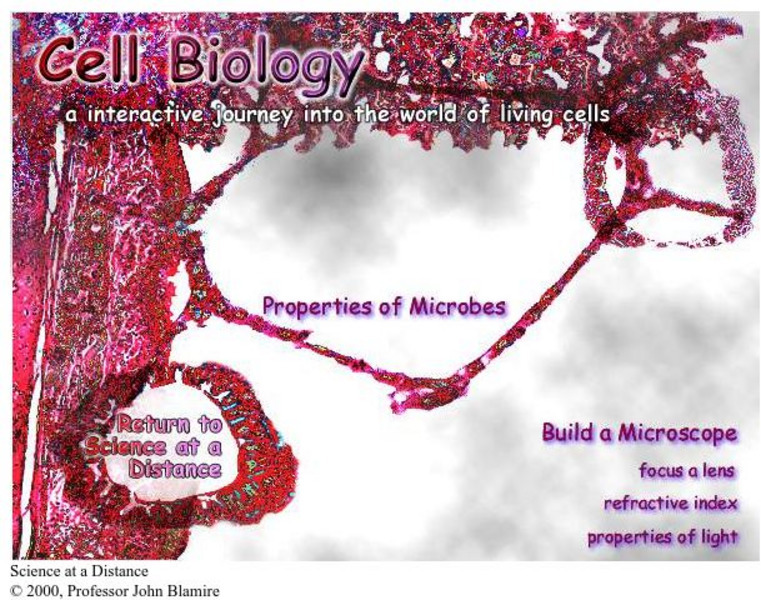Towson University
Mystery of the Crooked Cell
Can your class solve the Mystery of the Crooked Cell? Junior geneticists collaborate to learn about sickle cell anemia in a fascinating lesson plan. The included materials help them to examine the genetic factors behind the disease...
Curated OER
What Are Cells?
Energize the cells of young biologists with an edible life science activity. Engaging students in exploring the inner workings of plant and animal cells, this activity involves using colored jello and various sweet and...
National Institute of Open Schooling
Solid State
Crystal comes from a Greek word meaning ice. Activity eight in a series of 36 has class members analyzing amorphous and crystalline solids and further classifying them based on their forces. They then explore solids, learning about unit...
It's About Time
Who Eats Whom?
Packed with visual aids and multiple learning opportunities, an engaging exercise challenges individuals as they explore the role of producers, consumers, and decomposers. After discussing differences between food chains, food...
Curated OER
Teaching About Plate Tectonics and Faulting Using Foam Models
Young scientists learn about plate tectonics and the three different types of faults (normal, reverse, and strike-slip) using foam models. The activity also covers common types of locations where these faults are found.
Curated OER
Bee Pollen Popular
The world would be a much different place without the help of pollinators. Read about the important role bats, hummingbirds, and various insects play in plant reproduction, exploring the interdependence of living things in an ecosystem....
Teach Engineering
Solar Angles and Tracking Systems
The sun will continue to rise in the east and set in the west, no matter what. The first instructional activity in a series of eight introduces the class to solar angles. It makes connections between a person's latitude and the angle of...
Teach Engineering
Quantum Dots and the Harkess Method
The Fantastic Voyage is becoming close to reality. The class reads an article on the use of nanotechnology in the medical field and participate in a discussion about what they read. The discussion method helps class members become more...
American Chemical Society
The Discovery of Fullerenes
Carbon is the most common element on earth, so the innovative discovery of a new type of carbon molecule won the 1996 Nobel Prize. In the ready-to-go lesson, scholars learn about C60 and how it has opened up the entire area of...
City University of New York
Cell Biology: An Interactive Journey
This interactive website about microscopes and microbes provides students with an introduction to cellular biology.
National Institutes of Health
Ncbi: The Molecular Biology of the Cell: The Chemical Components of a Cell
Advanced chapter of the book "The Molecular Biology of the Cell" describes and provides illustrations of our most current understanding of the chemical makeup of cells and their components. Explains in detail how electron activity keeps...
Other
Eureka Science: Cells: Bacterial Cells
In story form, this site examines the similarities and differences among bacteria, plant cells, and animal cells. Drawings supplement the text for clarity purposes.
University of Arizona
University of Arizona: Puntas De Raiz De Cebolla Online
In this activity you will be able to classify and count the cells from the tip of an onion root into the appropriate phases of the cell cycle. You can use your count to predict the time a dividing cell spends in each phase.
Khan Academy
Khan Academy: The Endomembrane System
Article looks at the structure and function of the different parts of the endomembrane system, how proteins, lipids, and vesicles are transported between these parts, and how this activity keeps the cell running smoothly.
BiologyWise
Biology Wise: Different Types of Bacteria
Discusses the different criteria used to classify bacteria and the groups of bacteria within each category. Groups are organized by characteristics such as morphology, shape, cell wall structure, and presence of flagella.












